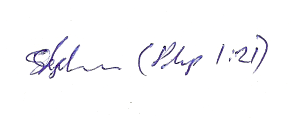Submitter
Follow @BibleSupportFile Information
- Submitted: Jun 27 2011 01:30 PM
- Last Updated: Apr 29 2023 10:40 PM
- File Size: 16.17MB
- Views: 34362
- Downloads: 5,944
- Author: A. E. Knoch
- e-Sword Version: 9.x - 10.x
- Tab Name: C:LT
Support BibleSupport.com
-
If our e-Sword and MySword modules have blessed you, please consider a small donation.
Your donation pays only for dedicated server hosting, bandwidth, software licenses, and capital equipment (scanners, OCR equipment, etc).
e-Sword 9+ Module Download:
Download
Concordant Literal Version (CLT) (2003) 1.0




 25 Votes
25 Votes
Author:
A. E. Knoch
e-Sword Version:
9.x - 10.x
Tab Name:
C:LT
This presentation of the CLNT does not include the various textual notations of the printed text or the PDF files, we trust these pages will serve as a further means of introducing you to the CONCORDANT VERSION. For more information: http://www.concordant.org/
As an earnest Bible student, desiring to understand the Word of God, the compiler discovered that practically all solid progress in the recovery of truth during the last century had come through use of concordances. He found that those of his friends who based their study on a concordance made the surest and speediest advance in their knowledge of God. Hence he also began to test and correct his ideas as to the meaning of Bible words by tracing them through all their occurrences. The immense profit and pleasure of this plan awoke in him a strong desire to do all in his power to assist others in this safe and satisfactory method of assuring themselves of the real revelation which God has given.
Thus it was that the idea of a Concordant Version suggested itself to his mind. Instead of occasionally making current translations more harmonious with the Original by using a concordance, why not make a version which is already concordant? Indeed, such a version might do far more to bring the reader into accord with the facts than would be possible by the patient and prolonged study of a concordance. The greatest benefit would come, not only to the serious student, but also to the humble reader who would prayerfully use the Version and allow the contexts to color each word and define its force for him. The concordant method of studying the Scriptures uses a concordance to discover the meaning of a word. This is done by tracing the occurrences of the words in the Original, and not according to the various vocabularies found in English versions. The aim is to discover the usage and fix its signification by its inspired associations. It is in line with the linguistic law that the meaning of a word is decided by its usage. In this Version the efficiency and value of this method has been greatly multiplied by extending it to the elements of which the Greek words are composed, and by combining with it the vocabulary method, which deals with each word as having a definite province of thought which must be carefully kept within its own etymological and contextual boundaries.
The CONCORDANT LITERAL NEW TESTAMENT is not a “modern” version. Neither is it archaic. The method is such that little regard could be paid to the outward embellishment of thought. All appearances are subordinated to accuracy. Truth is itself both desirable and beautiful. The living Word was not clothed in sumptuous garb to entice the eye. He had no form nor comeliness. There was no beauty, that they should desire Him. The written Word needs no ornamentation. Familiar, finely phrased error will appeal to the ears, but inspired, precisely translated truth should be the pattern accepted into the sound mind. The concordant method seeks to convey the truth of the Word, not to adorn it for appeal.
Copyright © 1999-2011 Concordant Publishing Concern. http://www.concordant.org/
What's New in Version 1.0 (See full changelog)
- Uploaded Mac/e-sword 11 version.
Use Caution Here! I have been around the block a few times with these people (Concordant publishing) and other Unitarians like them (Jehovah's Witnesses, Christadelphians). The Concordant Literal Version preceeded the Watchtower's New World Translation by several decades in translating John 1:1 as "the Word was a god." Comparing this to the NWT, it is the same. The main person behind the CLV is A. E. Knoch, an anti-Trinitarian who once wrote articles for the Watchtower Magazine (JWs) back in the 1930s. I did a lot of research on them in the 1970s when I was writing a chapter about The Way International for Dr. Walter R. Martin's book, The New Cults (Vision House, 1980). The Way also used the CLV as a resource for denying the deity of Jesus Christ. I have the CLV in hardbound editions and the e-sword edition (for research purposes). They also published a Greek interlinear edition, long before the Watchtower published the Kingdom Interlinear NT. I notice that the CLV places their website here, which I guess that they are free to do, but please allow me the freedom to warn Christians that their doctrines are not evangelical in the least.
--kvg
The Concordant Literal New Testament does an excellent job of using one English word for one Greek word and they only miss this goal a few times. For example, instead of translating Gehenna, hades and Tartarus all as "hell" like so many other versions do erroneously, they use different English words so the reader can tell there is a different word being used in the Greek WITHOUT having to consult a concordance. This is extremely helpful.
Also, this is a literal, word-for-word translation, not a paraphrase. It may not be the easiest to read but it is an EXCELLENT study tool. There are no warnings or cautions needed with literal, word-for-word translations as they cannot insert their own doctrines into the text.
The Concordant Literal Version preceeded the Watchtower's New World Translation by several decades in translating John 1:1 as "the Word was a god."
Not according to http://www.concordan...es/04_John.htm, "In the beginning was the word, and the word was toward God, and God was the word."
Do you have any other evidence?
the only thing that is missing is Strong's.
I've been reading A.E. Knochs stuff and it appears that his doctrine is original Arianism. There's a emphasis of Christ being God's image, God's likeness, God's radiant glory..the manifestation of God but not God in and of himself. However, I'm not comfortable with their teachings.
Concordant is quite wooden, and I am not certain that a word for word translation is the best. However, it is quaint and attractive in it's own way. I think the group associated with the publishing concern would tilt toward hyperdispensationalism (e.g. E.W. Bullinger). Concordant had a deal in the works with the Watchtower Society in the late 1910s to have the Concordant translation printed by them, however, sometime in the early 1920s a member of the WTs editorial board left the WT to join up with Concordant. That man was F. H. Robison. After that, JF Rutherford ended the relationship, leaving Concordant to find other means of publishing their translation.
Concordant is quite wooden, and I am not certain that a word for word translation is the best.
My advise is to watch out for the splinters.![]()
Sorry, I just couldn't resist that one.
Concerning the CLV, Although I have it, I only use it for comparative reasons. It's not the best translation that I've come across, and have seen glaringly obvious mistakes in the text.
Where erroneous translations have been made, I am sort of glad that they are there because its helpful in trying to understand the translator to see why they have gone off the tried and true proverbial beaten track.
With regards to trying to read it, I find it makes really difficult to read because the sentence structure is quite difficult to get one's head around it. There is a lack of flow in the text.
Blessings,
Splinters.....now where is that rim-shot when you need it?....lol....
Regards.
Other files you may be interested in ..
- 8,225 Total Files
- 50 Total Categories
- 275 Total Contributors
- 5,884,172 Total Downloads
- French David Martin , KJB Latest File
- PeanutGallery Latest Submitter
42 user(s) are online (in the past 30 minutes)
5 members, 16 guests, 0 anonymous users
Facebook (15), Slavu daniel, Bing (6), kunjummen, billhuff2002, Katoog, David gonfer





















'The aim is to discover the usage and fix its signification by its inspired associations.' -- How precious! How pure!